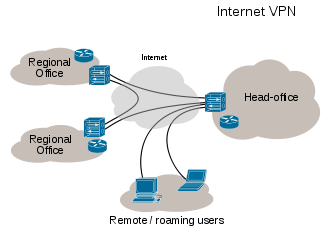Residences typically employ one LAN and connect to the Internet WAN via an Internet Service Provider (ISP) using a broadband modem. The ISP provides a WAN IP address to the modem, and all of the computers on the home network use LAN (so-called private) IP addresses. All computers on the home LAN can communicate directly with each other but must go through a central gateway, typically a broadband router, to reach the ISP.
Types of Area Networks
Wireless Local Area Network - a LAN based on WiFi wireless network technology
Campus Area Network - a network spanning multiple LANs but smaller than a MAN, such as on a university or local business campus.
Storage Area Network - connects servers to data storage devices through a technology like Fibre Channel.
System Area Network - links high-performance computers with high-speed connections in a cluster configuration. Also known as Cluster Area Network.






0 comments:
Post a Comment